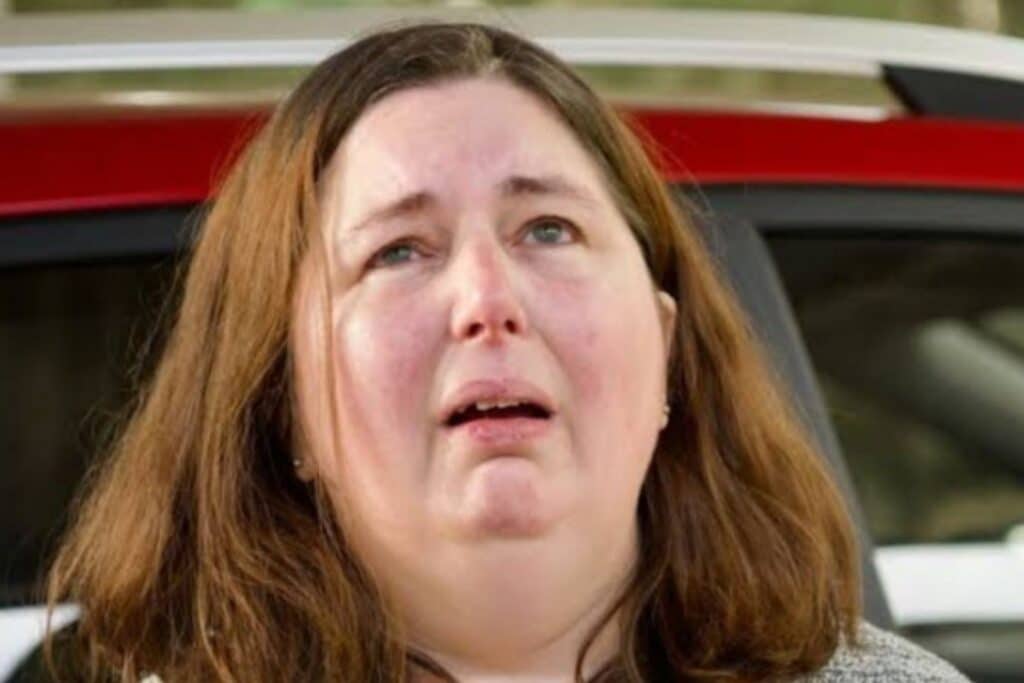It’s been a little over two weeks since the trial of Erin Patterson kicked off in the Supreme Court of Victoria.
Patterson is charged with three counts of murder for the deaths of Don and Gail Patterson, and Heather Wilkinson and one count of attempted murder for allegedly attempting to kill Ian Wilkinson with death cap mushrooms in July 2023. Patterson has pleaded not guilty to all charges.
As the trial continues, several podcasts have been charting the day-by-day proceedings, summarising the testimony and evidence of witnesses, experts and arguments made by both prosecution and defendants. The popularity of such podcasts is startlingly; already, there are four different podcasts serving up daily updates on the trial and its findings.
They include the Daily Mail’s “The Trial of Erin Patterson”, from the publication’s The Crime Desk, ABC Listen’s “Mushroom Case Daily”, presented by ABC court reporter Kristian Silva, News Corp Australia’s “The Mushroom Cook: The Trial” and “The Mushroom Murder Trial”, created by an independent civilian.
With surging ratings by the day, we’re wondering why so many of us are fascinated by true crime — and why most of the consumers are women.
What does the research say?
Over the past several years, studies have shown the disproportionate interest women have in true crime compared to men. In fact, in the US, women are twice as likely as men to regularly listen to true crime podcasts.
In 2010, researchers from the University of Illinois found that when given a choice of violent reading material, women overwhelmingly chose to read true stories about the death and dismemberment of victims much like themselves compared with men. The study’s authors suspected that women enjoy true crime stories because such stories offer information that the readers believe can help them avoid or escape from a potential attacker.
The same study found that the number of women interested in true crime podcasts rose by 16 per cent in 2019. Around that time, popular true crime podcast, Wine and Crime, reported that of the more than 500,000 downloads they get each month, 85 per cent of their audience is female.
“We think that it’s because women are so often portrayed as victims in the media,” one host said. “And women in particular like to think about something and understand it in order to overcome anxieties based around that.”
Citing a range of studies over the years, journalist Nancy Jo Sales shared similar sentiments in an article for The Guardian in 2023: “Through consuming true crime content…women experience catharsis; they work out their fears about their own vulnerability and perhaps their rage about what has happened to other women as well. They see in true crime a source of education about how not to wind up a victim.”
Another study from 2020 investigated the link between true crime podcasts and domestic violence survivors who consumed them. The research surveyed sixteen female listeners of true crime who identified as domestic violence survivors, and found several reasons for their fascination with the genre, including the love of a good story, the educational value of true crime podcasts, connection to lived experiences, and the potential therapeutic role of true crime narratives.
Anecdotal evidence from true crime content producers also confirm these statistics, including criminologist Scott Bonn, who reported in 2023 that his audience is consistently 80 per cent women of all ages.
In a piece for Psychology Today, Bonn, the author of “Why We Love Serial Killers: The Curious Appeal of the World’s Most Savage Murderers”, said that female consumers often empathize with the victims in true crime stories and can easily imagine themselves in the role of the victim in true crime cases.
According to Bonn, women also strongly empathise with and seek to understand the motivations of the perpetrators—especially male perpetrators—in true crime stories.
“I believe this has to do with a female desire to feel safe and secure,” Bonn wrote. “Many female true crime fans have told me that their greatest fear is being attacked by an unknown assailant. Single women have told me that they look to true crime TV shows and podcasts for tips on how to protect themselves from attacks by strangers, as well as how to detect sociopathic “red flags” in the personalities and demeanour of single men they encounter.”
One journalist from The New York Times expressed her own reasons why she finds the genre so irresistible; the fact that justice is ultimately served.
“Most of the true crime I watch reflects a black-and-white moral universe where victims ultimately get justice, even if it is delayed,” Jessica Grose wrote in November. “In this closed world, modern law enforcement is competent and empathetic, and evidence from medical examiners and forensic scientists is taken seriously.”
“My favourite true crime does not just show good people doing their jobs. It also celebrates the emotional and intuitive; victims, including their families, often have hunches about perpetrators that elude law enforcement and defy norms.”
For all these reasons, it’s clear that true crime is a genre that will continue to elicit our keen interest.
Image Credit: Shutterstock
Become a Women’s Agenda Foundation member and support our work! We are 100% independent and women-owned. Every day, we cover the news from a women’s perspective, advocating for women’s safety, economic security, health and opportunities. Foundation memberships are currently just $5 a month. Bonus: you’ll receive our weekly editor’s wrap of the key stories to know every Saturday.


